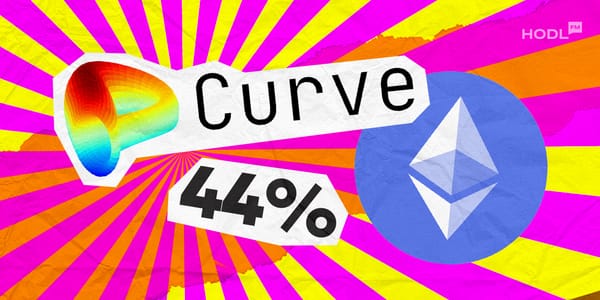Ethereum blockchain shanghai hard fork is a permanent change to the Ethereum network’s protocol that will result in a new version of the blockchain Shanghai. It will essentially create a new branch of the Ethereum blockchain that will operate independently from the previous version. This will be done to address several issues on the Ethereum network, including high gas fees and slow transaction processing times.
The upgrade will make the network more efficient and scalable, allowing it to handle more transactions. Users will obtain an equal number of the new version of Ethereum following a hard fork, and the older version will no longer be supported. This implies that to view and utilize the new version of Ethereum, users will need to update their Ethereum wallets and software.
Ethereum- 4895- is the change that unlocks validator withdrawals. The primary goal of Ethereum-4895 is to enable validators to withdraw their staked ether (ETH) from the Ethereum deposit contract. Validators are users who participate in the network by staking their ETH and helping to validate transactions and create new blocks. With the activation of Ethereum-4895, validators can now withdraw their staked ETH at any time by submitting a withdrawal request. This change is beneficial to validators as it provides them with more flexibility and control over their staked ETH.
What is EIP-4895?
EIP-4895, will enable validators to withdraw the 16 million ETH they have thus far “staked” to aid in network security, is the standout of the Ethereum blockchain shanghai hard fork
During the merge, the network started using validators rather than miners to add blocks to the blockchain when Ethereum switched from proof-of-work (PoW) to proof-of-stake (PoS) Participation in the block validation procedure required validators to invest 32 ETH with the chain.
Validators were informed that their staked ETH and any accrued rewards would stay locked up until a subsequent update to the chain before they consented to engage on the PoS blockchain. Since December 2020, when Ethereum published its PoS “Beacon Chain” as its first move toward the Merge, validators have been staking ETH and earning rewards. These validators can now fully cash out their stake.
Importance of the Shanghai hard fork?
Due to the volatility of the cryptocurrency markets over the past year, stakers may want to withdraw any rewards they have accumulated over the past two years or simply gain more control over their money, which gives the Shanghai hard fork its purpose.
However, ever since it went live, the PoS blockchain has not been completely featured, in addition to allowing access to locked-up funds. Even though the blockchain is currently operational, stakers have been required to commit to keeping their money secured to maintain Ethereum’s functionality. The entire functionality of a proof-of-stake blockchain will now be realized thanks to the mechanism that will release staked ETH, giving stakers complete control over their funds and the prerogative over how they will use their awards.
To join the network, validators must stake a certain quantity of Ether (ETH) as collateral. A validator can start the process of unstaking their ETH if they want to leave the network or retrieve their staked ETH. The steps a validator can take to unstake their ETH are listed below.
- Commence the withdrawal process: Validators can start the withdrawal procedure by Using the validator’s validation key, signing a message for a voluntary exit, then sending it to the CL for processing a request
- Wait for the withdrawal process to be finished: Validators must wait a predetermined amount of time after starting the withdrawal process for the withdrawal to be completed.
- Confirm the withdrawal: The validator’s staked ETH will become accessible for withdrawal after the withdrawal window has passed.
Following the Capella upgrade, the CL will process 16 validators per block, depending on their index number, every 12 seconds. Validators can start unstaking and skimming payments if they are withdrawable, i.e., if they have 0x01 credentials.
When a verifier has left and is withdrawable, unstacking takes place. The current amount of the validator, which includes 32 ETH and rewards, is in this instance burned on the CL and minted to the withdrawal credentials address on the EL. The verifier is still in use.
When a validator is withdrawable but not left, skimming takes place. In this instance, all ETH that is still accessible on the validator balance above 32 ETH is burned on the CL and minted to the EL’s withdrawal credentials address.
It will take roughly four days to handle all of the network’s validators because there are just under 500,000 validators on the network with 0x01 credentials. As a result, a validator’s EL withdrawal credential account will typically receive liquid rewards every four days. It will occasionally be unstaking and frequently be scraping.
Are crypto traders rushing to sell their ETH?
There is no evidence that crypto traders are rushing to sell their ETH in anticipation of the Shanghai hard fork. Many traders are optimistic about the upgrade’s potential to improve the Ethereum network and increase the value of the cryptocurrency.
Approximately 1 million ETH worth of accrued rewards is currently available for withdrawal as soon as Shanghai goes online. Trading participants will be monitored to see if the unlocked ETH is immediately cashed out and if this affects the price of ETH.
The Shanghai hard fork is just one step in Ethereum’s ongoing development. The Ethereum community is already working on several other upgrades and improvements to the network, including the transition to a proof-of-stake consensus mechanism
About Ethereum
Ethereum (ETH) is a decentralized, open-source blockchain platform that was launched in 2015. It is the second-largest cryptocurrency by market capitalization, after Bitcoin, and is widely regarded as a key player in the development of the blockchain ecosystem. Ethereum allows developers to create decentralized applications (dApps) and smart contracts that can execute autonomously, without the need for intermediaries.
ETH operated on a proof-of-work consensus algorithm, which was energy-intensive and came under criticism for its environmental impact. Currently, Ethereum is now using a proof-of-stake consensus mechanism as part of its Ethereum 2.0 upgrade, which is making the network more energy-efficient and scalable.
Ethereum has a vibrant and active developer community, which is constantly working on improving the network’s functionality and security. The platform has been used to build a wide range of applications, including decentralized finance (DeFi) protocols, non-fungible tokens (NFTs), and gaming applications.



